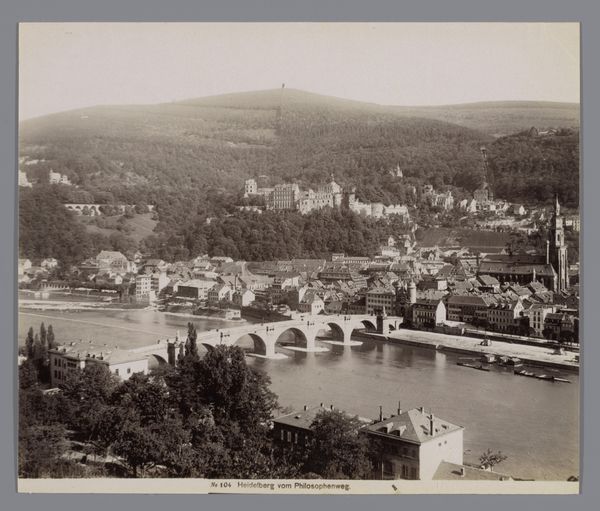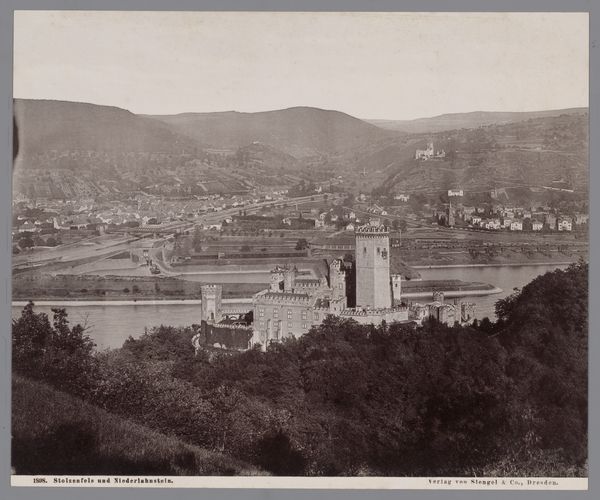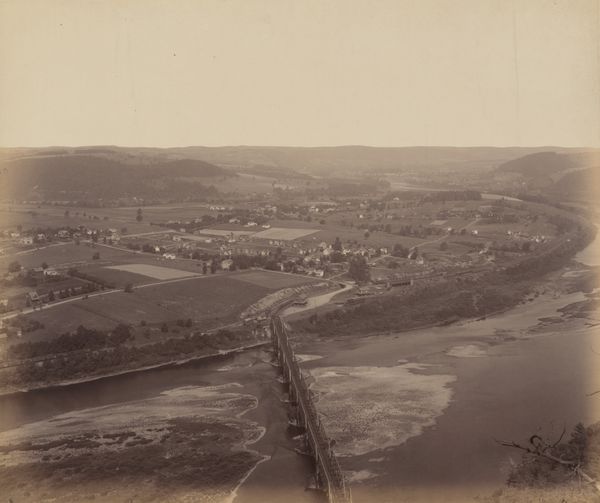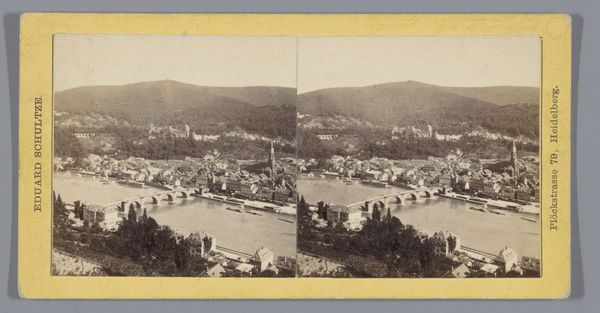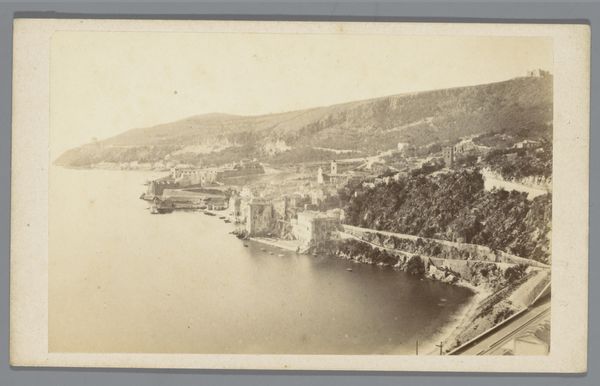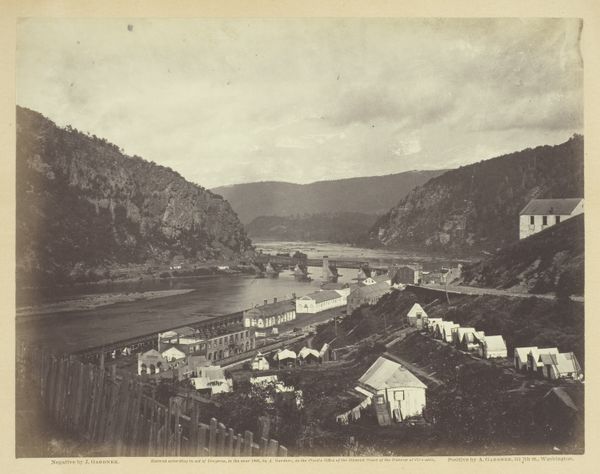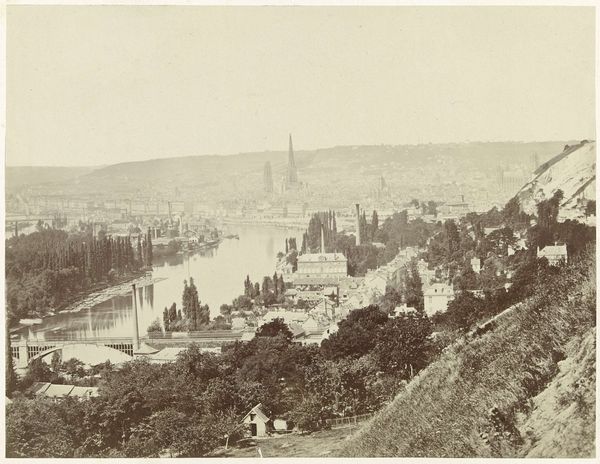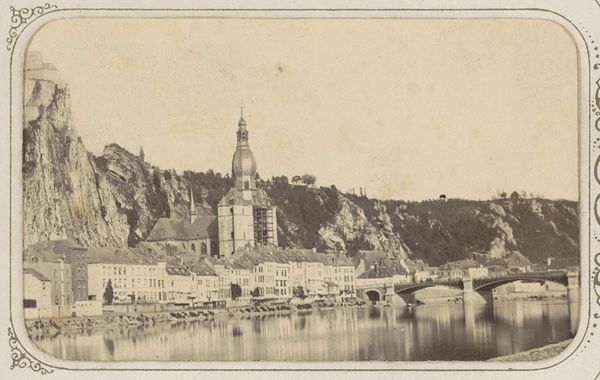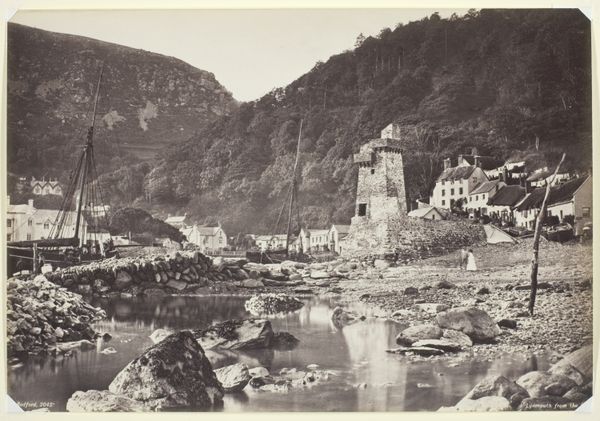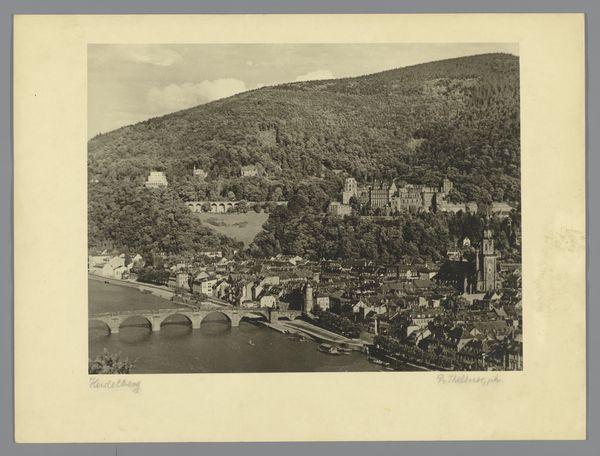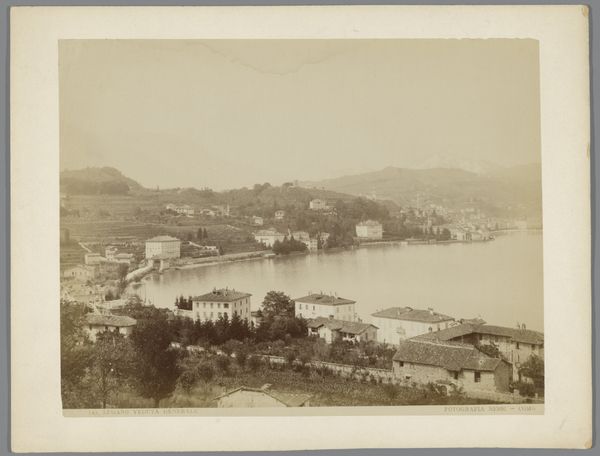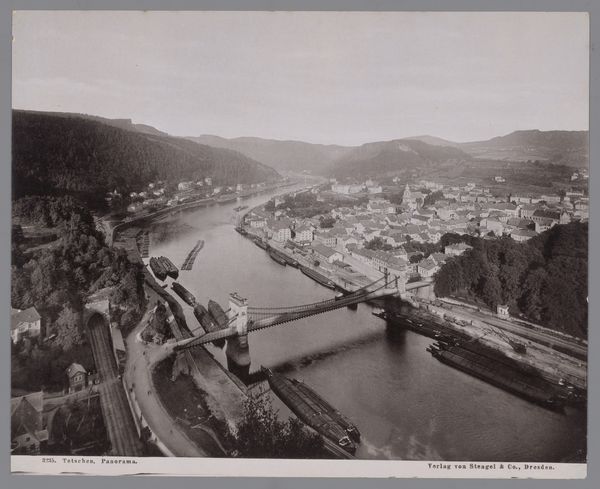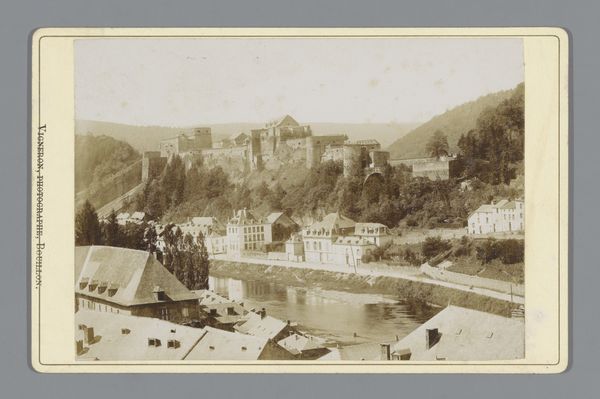
Dimensions: height 200 mm, width 264 mm, height 314 mm, width 451 mm
Copyright: Rijks Museum: Open Domain
Editor: So, this is "Gezicht op Heidelberg," a cityscape photograph from between 1855 and 1879, made with an albumen print. It's so sepia-toned, giving it a really antique, almost dreamlike feel. I'm curious, what do you see in this piece? Curator: Well, it’s a classic example of 19th-century pictorialism, but beyond its aesthetic qualities, what does it tell us about the emerging public role of photography? Think about it – before photography, images of places like Heidelberg were primarily accessible through paintings, available mainly to the elite. This albumen print, mass-produced, makes the cityscape accessible to a wider audience, shaping their perception of the city and German identity. Editor: So, it's about democratization through imagery? The postcard effect, but much earlier? Curator: Precisely! How did photographic societies and exhibitions shape public taste and artistic standards around this time? Did institutions like the Rijksmuseum immediately embrace photography as art, or did they see it as merely a tool for documentation? This is something to consider. Editor: I hadn’t considered photography as a way to shape public imagination of a city like that! Curator: It's important to remember how images have been—and still are—used to construct narratives, legitimize power, and influence public opinion. Now, imagine viewing this photograph as someone living through that era. It's not just a picture; it’s a carefully constructed message. Editor: That's really opened my eyes to thinking about how art impacts culture in real time. Curator: Indeed. Studying art history isn’t just about recognizing styles; it’s about understanding the conversation between art and society.
Comments
No comments
Be the first to comment and join the conversation on the ultimate creative platform.
